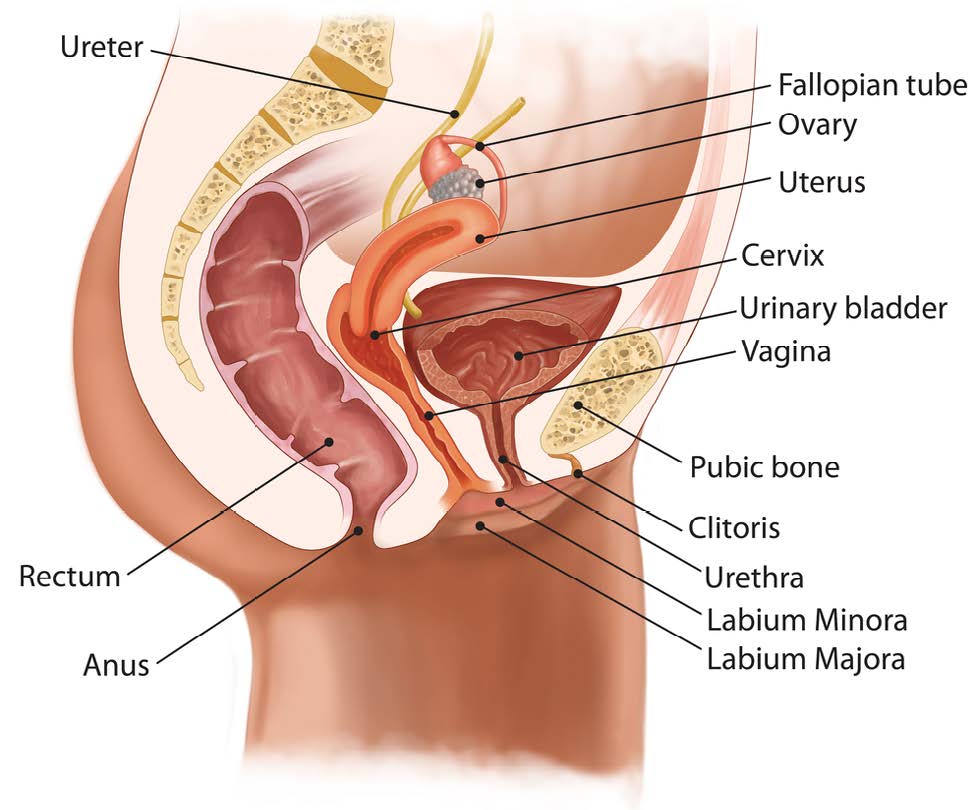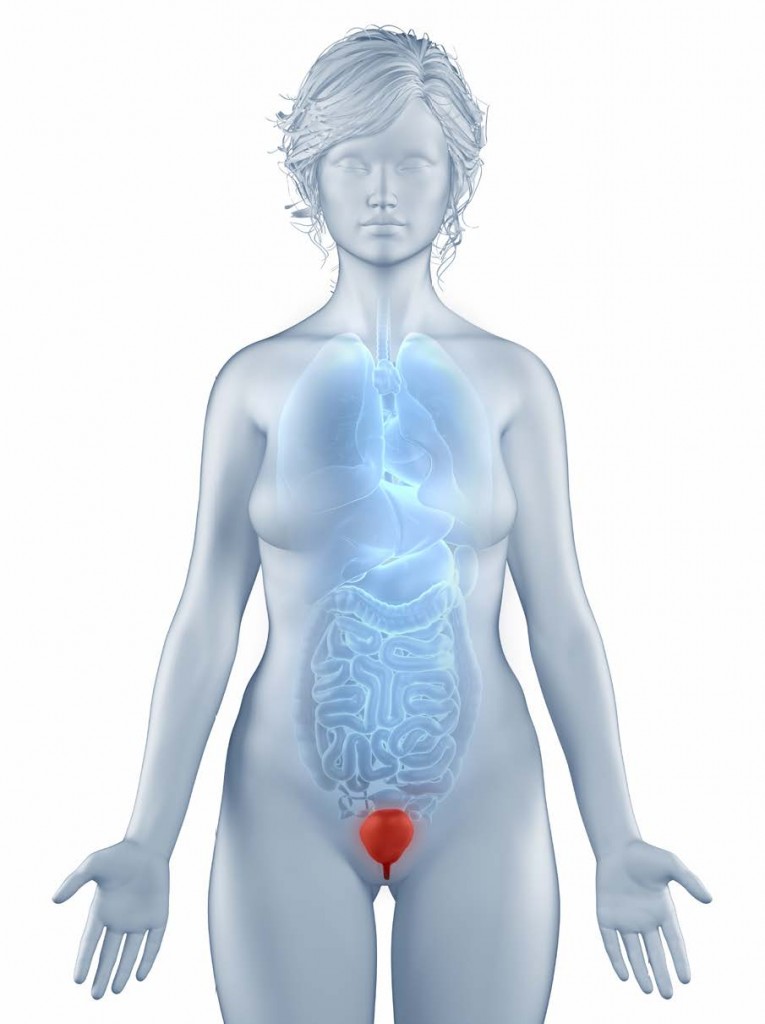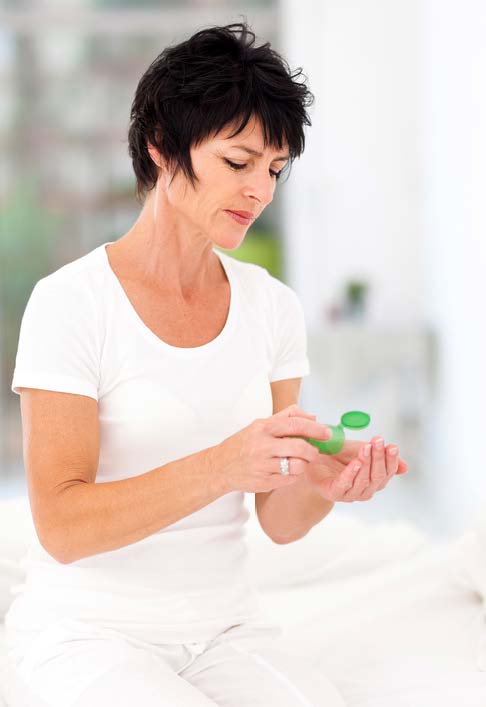
If you’ve ever worried you wouldn’t find a bathroom in time or worried about wetting your pants each time you sneeze, read on to understand the problem and find tips on what to do.
Shhhhh. Most women don’t want to talk about it. In fact most wait 5-7 years to discuss it with their doctor. Let’s face it; it is embarrassing to have urinary incontinence. But it is so common, affecting 20 million women.
Women who have had children are more likely to have urine loss than those who have not. The wear and tear of childbirth can weaken the pelvic muscles and fascia, the canvas sheath that reinforces and additionally supports the urethra.
Most women don’t want to talk about it and wait 5-7 years to discuss it with their doctor
Half of all menopausal women will have at least some urine loss because the lining of the urethra and the fascia and pelvic muscles that surround them are sensitive to estrogen and may weaken when estrogen levels decline. Fortunately, there are treatments available for urinary incontinence, but first it had to be recognized as a treatable problem and talked about with a medical professional. There are several types of incontinence.
Urge Incontinence occurs in women with an overactive bladder who may not be able to get to the toilet in time to prevent leakage, even though they tighten up all of their pelvic muscles, because they can’t control the bladder and keep urine in.
 Overactive bladder that leads to urge incontinence affects about 17% of women but it increases to over 50% after menopause. Overactive bladder may be common but it isn’t a normal part of aging.
Overactive bladder that leads to urge incontinence affects about 17% of women but it increases to over 50% after menopause. Overactive bladder may be common but it isn’t a normal part of aging.
Stress incontinence is a much more common type of incontinence. Menopause contributes to this problem, but stretching and tearing of the pelvic muscles during childbirth definitely sets the stage.
The reduced muscle tone causes the urethra to sag. When pressure builds up in the abdomen from a cough, sneeze, laugh, jump or lift, internal organs put pressure on the bladder and a small amount of urine may escape. It can happen at any time making it understandable that it’s an incredible nuisance and so embarrassing.
Overflow incontinence occurs when more urine collects in the bladder than the bladder can hold and the excess urine leaks out. It can be caused by blockage of the urinary tract or nerve damage caused by conditions such as diabetes, stroke, or injury.
Functional incontinence is not really a problem with the urinary tract. It happens to people who can’t move quickly, who have eye problems or who suffer from confusion or memory loss. They simply can’t get to the bathroom in time. The North American Menopause Society’s Menopause Guidebook points out that infection of the bladder (cystitis), other medical conditions such as multiple sclerosis, certain prescription drugs such as diuretics and some tranquilizers, and smoking and eating spicy foods or artificial sweeteners, or drinking alcohol and caffeine can irritate the bladder and worsen incontinence.
Overactive bladder may be common but it isn’t a normal part of aging
Twenty years ago the number of options for treating urinary tract problems was limited and the most common choice offered was a hysterectomy. Today, there are many more options to consider from a new device called InTone, to pelvic floor physical therapy, medications, and surgery. The first step is to have a work up to diagnose the underlying problem so that an appropriate treatment plan can be put into place. Sometimes more than one treatment is needed. Here are 8 types of treatment. Talk with your doctor about what might be appropriate for you.
 1 Bladder training – This approach teaches you to urinate only at scheduled times and waiting longer between trips to the bathroom. Start by going to the bathroom every 30 to 60 minutes while you are awake, even if you don’t have to go. After about one week, slowly increase the time interval by thirty minutes every week.
1 Bladder training – This approach teaches you to urinate only at scheduled times and waiting longer between trips to the bathroom. Start by going to the bathroom every 30 to 60 minutes while you are awake, even if you don’t have to go. After about one week, slowly increase the time interval by thirty minutes every week.
2 Kegel exercises – Dr. Arnold Kegel, a gynecologist at the University of Southern California, developed the exercises to strengthen pelvic floor muscles in 1948 and still, physicians to this day remind their patients, “do your Kegels!” Kegel exercises are often the first line of treatment for the millions of women in the U.S. suffering from unexpected bladder leakage due to coughing, sneezing, laughing or exercise often referred to “stress” incontinence but many women experience frustration because they unknowingly don’t perform the Kegels effectively, which leads to no improvement in symptoms.
A new medical device called Apex is the first automatic pelvic floor (Kegel) exerciser. Apex automatically strengthens and tones pelvic floor muscles using mild muscle stimulation and an active resistance balloon to exercise the correct muscles every time. A strong, toned pelvic floor muscle (PFM) not only decreases involuntary loss of urine, but also improves sexual health and may decrease the prolapse (dropping) of organs such as the uterus and bladder into or out of the vaginal canal.
3 Pelvic Floor Electrical Stimulation with Biofeed-back Therapy – This is an effective tool to teach you Kegel exercises and improve bladder control. It uses computer graphs and sounds you can hear to show you which muscles you are exercising so you can perfect the exercises. Physical therapists and other professionals specially trained in problems related to women’s health teach exercises for the pelvic floor, trunk, back and extremities that can help strengthen the pelvic muscles and improve bladder control. The physical therapist may use devices that use mild, comfortable, electrical stimulation to train the bladder muscles when and how to squeeze.
InTone is a new FDA listed Class II Medical Device for home use that has been shown to effectively strengthen the pelvic floor muscles and helps to prevent embarrassing leakage without surgery or medication and can be done in the privacy of home. InTone is like a personal trainer for Kegel exercises.
 5 Medications – Estrogen can be very helpful in improving the symptoms of some cases of incontinence. Studies have demonstrated improvement in 40-70% of women. I have found that estrogen cream (one fourth to half an applicator) works better than either tablets or patches for this particular problem.
5 Medications – Estrogen can be very helpful in improving the symptoms of some cases of incontinence. Studies have demonstrated improvement in 40-70% of women. I have found that estrogen cream (one fourth to half an applicator) works better than either tablets or patches for this particular problem.
Medications called antimuscarinic (examples are oxybutynin and tolterodine) can also help if the problem is caused by abnormal bladder contractions. Of course, antibiotics are the first line treatment for infection. If you don’t respond to these medications, you may be a candidate for Botox injections via cystoscopy directly into the bladder muscle.
6 Pessaries – These donut-like plastic or rubber rings are similar to a diaphragm used for birth control. They are fit into the vagina to lift and offer added support for the bladder when the pelvic muscles are weak.
7 Special devices – A new group of devices are constantly coming on to the market to block or capture urine leakage. They include absorbent products, external urine collection devices, and different types of catheters.
8 Surgery – There are many operations that have been developed to support the bladder and improve or correct incontinence. These include implanted sacral nerve stimulators that stimulate the lower area of the spinal cord to control urine and pulsed magnetic technology that stimulates nerve impulses for bladder control. It’s called Extracorporeal Magnetic Innervation (ExMI).
You don’t need to have a hysterectomy unless there are other reasons to consider it as well. Most of these operations can be performed as day surgeries. Some use laparoscopy and others only small incisions. They all are designed to repair tears in the support tissue and/or strengthen or support the urethra. Talk with your doctor about them or get a referral to a urogynecologist.
Women don’t have to suffer in silence; there are many treatment options available. Remember to ALWAYS talk to you doctor or medical team about anything you add to your health regimen.


